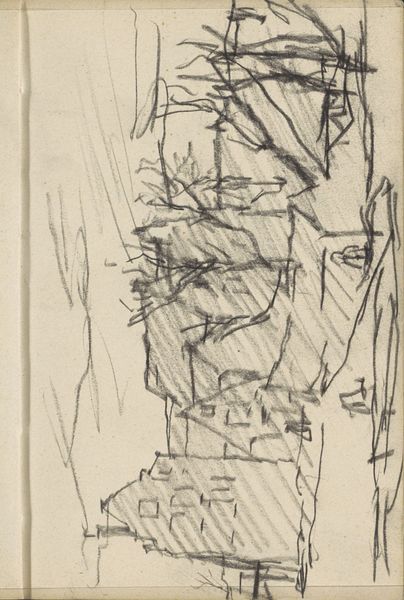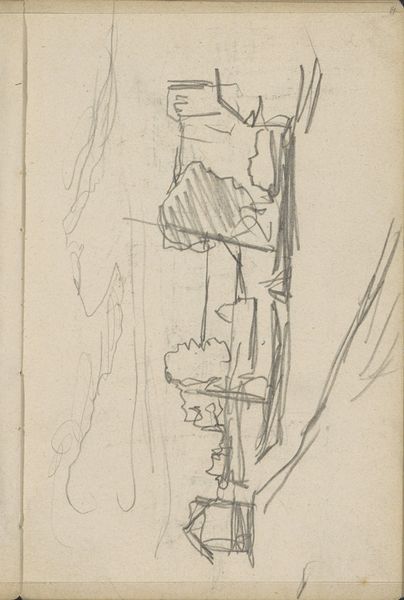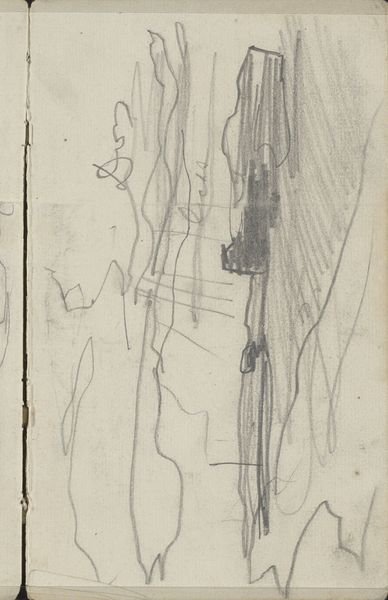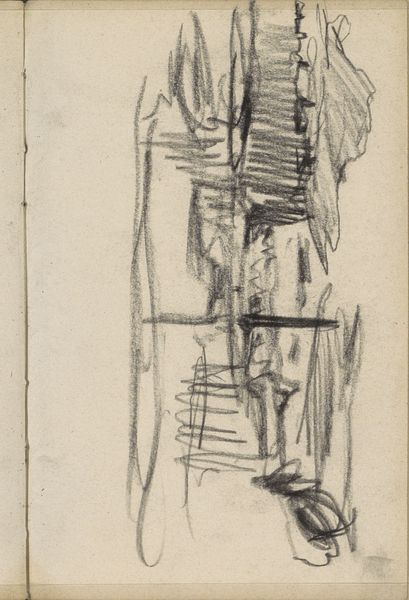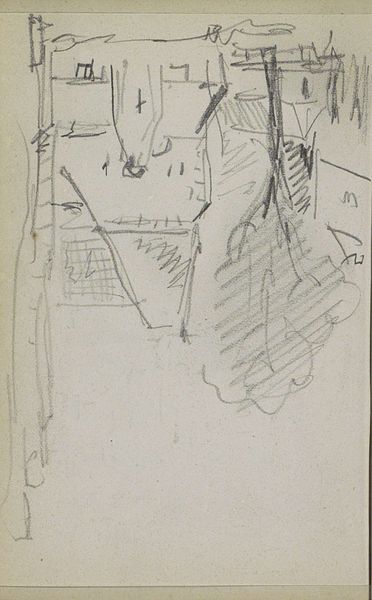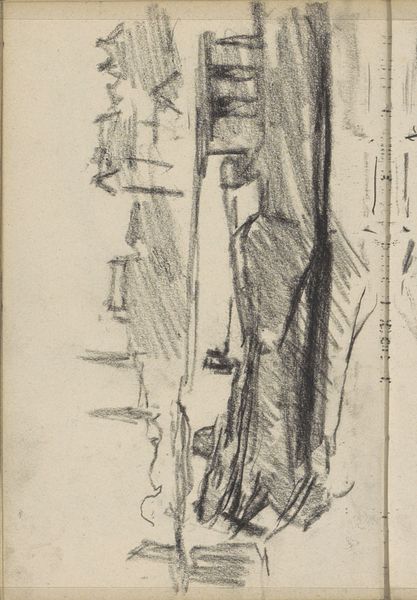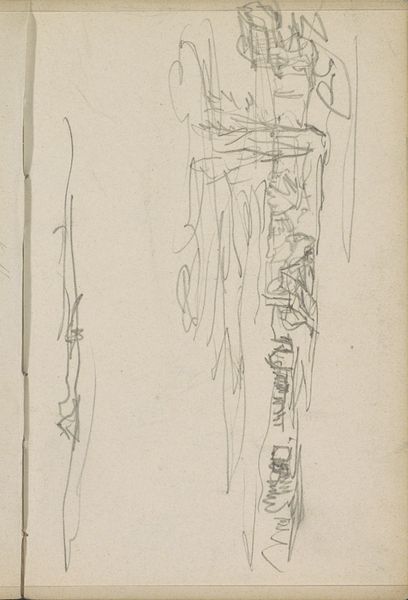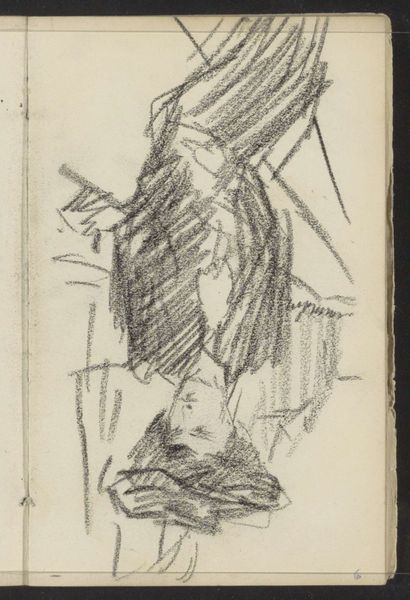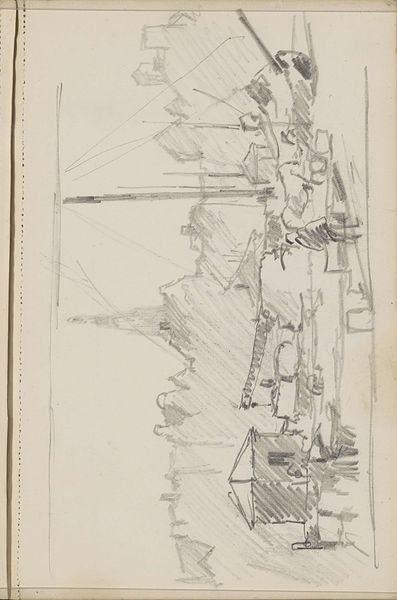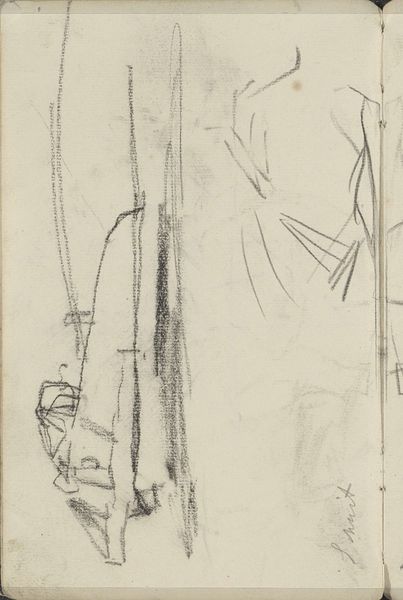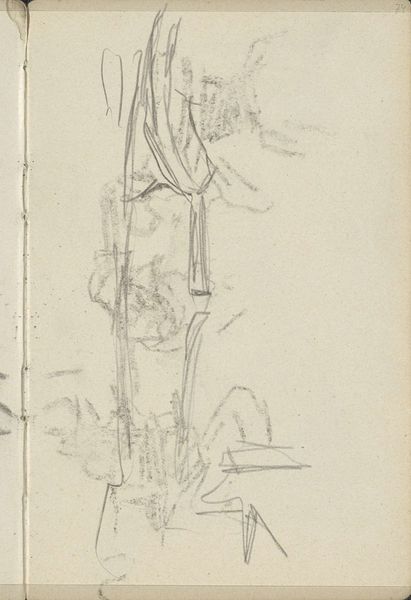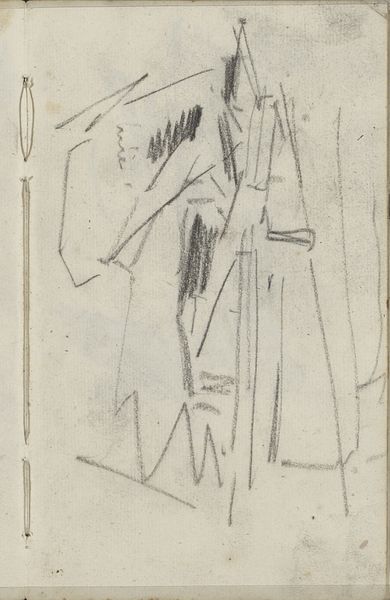
Gezicht te Amsterdam, mogelijk nabij Prinseneiland Possibly 1907 - 1911
0:00
0:00
georgehendrikbreitner
Rijksmuseum
Copyright: Rijks Museum: Open Domain
Curator: Before us we have "Gezicht te Amsterdam, mogelijk nabij Prinseneiland," or "View in Amsterdam, possibly near Prinseneiland." It’s attributed to George Hendrik Breitner and likely created between 1907 and 1911. The work is a graphite drawing. Editor: My first impression is a sense of fragmented reality. The composition feels very raw and immediate, almost like a fleeting memory captured in graphite. Curator: That raw quality is quite characteristic of Breitner. He was very interested in capturing the energy and dynamism of the modern city, and this sketch seems to encapsulate that perfectly. His ties to Impressionism underscore a break with formal representation. How might the title help clarify your feelings about the subject? Editor: Well, knowing it's Amsterdam and potentially near Prinseneiland makes me think about the city’s history as a bustling port. The sketch now feels like an echo of that industrial past, the angular lines resembling the skeletons of ships and warehouses. The sharp lines have a coldness, maybe reflecting long winters? Curator: Absolutely. Breitner was keen to represent Amsterdam as a working city, not just a picturesque postcard image. Prinseneiland, historically a center for shipbuilding, provided him with a wealth of industrial subjects that mirrored the image he was carefully building. I imagine viewers at the time thought it challenged perceptions of how cities should be represented. Editor: There’s definitely a powerful sense of place evoked by the drawing, even if it's not immediately obvious what we’re looking at. I sense symbols of transience and impermanence... fitting considering graphite is erasable and therefore transient itself. The imagery of this location feels significant given the importance of sea trade to the development of Amsterdam itself. Curator: Breitner embraced photography as well, and that influenced his sketch work; consider this as something of a snapshot, a study focusing more on capturing an atmosphere than a precise depiction. His engagement reflects changing artistic attitudes regarding new possibilities of representing a subject. Editor: So, the apparent incompleteness reinforces that snapshot aesthetic; we are left to piece together the symbols of industry ourselves and conjure that bustling atmosphere from the skeletal lines. For me, it’s about that psychological impact: how it evokes this sense of a specific time and place without spelling it out literally. Curator: I think the power of Breitner's art, evident even in this sketch, lies in how he democratized artistic subjects. He chose to depict daily life in a style that embraced new mediums while provoking the accepted understanding of the purpose of art. Editor: Indeed. And that simple but evocative use of graphic representation leaves me thinking about the layers of memory embedded within seemingly unremarkable locations.
Comments
No comments
Be the first to comment and join the conversation on the ultimate creative platform.
